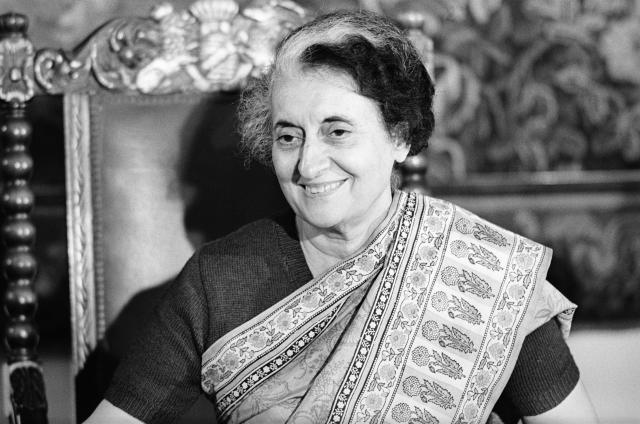For a politician, the only target in their vision is accelerating the growth of the nation they are representing and managing their stronghold over the position they have been given. Abilities such as strategy-making, farsightedness, wit, intrepidity, and presence of mind make a one-of-a-kind politician. But when these traits are complemented by unmatchable leadership skills, zeal to advocate for the right cause, and empathy towards the marginalised sections of society, it is not just a politician that a nation gets to see, rather it is the embodiment of charisma, boldness, and unwavering determination. That is exactly what the first woman Prime Minister of India, Indira Gandhi is.
Besides being one of the most revered leaders of India, especially for her relentless effort to support the victims of the Bangladesh liberation war, her initiative for the Green Revolution, and her determination to empower Indian women through government policies and initiatives, Indira Gandhi was a true connoisseur of Indian art, literature, and film. Incredible as it may sound but on one hand Indira Gandhi stood like a rock during the challenging times faced by India dedicating her life to eradicating poverty and getting India to an international position in the world, while on the other hand, she extended her support to encourage the growth of Indian cinema, literature, and art.
The first woman Prime Minister of India, Indira Gandhi always believed that art was an integral aspect of not just the personality of an individual, but an excellent indicator of the cultural distinction of a country. She always acknowledged that art had the power to articulate the core tradition of a country and there was no other way to get a holistic view of culture than studying its art. It is under her patronage that the Indira Gandhi National Centre for Arts has become a hub for showcasing the rich cultural heritage of India. The centre imbibed her vision of promoting Indian art and upholding its integrity on the international stage, thereby showing the unique aspects of India, its history, and its culture in its original form. To many, Indira Gandhi was not just an influential figure in the political history of India but she further fortified Indian culture and brought to it international exposure. According to the accounts of Dr. Prabha Sahasrabudhe, a former professor of art education at Columbia University, it was due to the enthusiasm of first woman Prime Minister of India that the Children’s Art Carnival, which was a pedagogical experiment, was organised at the Museum of Modern Art in 1942 with the sole aim of fostering creativity and imaginative ideas in children and has been organised in India since then. The proposition was presented by the first woman Prime Minister of India, Indira Gandhi herself to transform Indian society with the power of art education.
Being a fan of Western films Indira Gandhi had always wanted the refined and visually appealing culture of India to be represented through literature and art. She has always been interested in contributing to the growth of Indian literature and art which was manifested in the year 1982 at The Festival of India which was organised in Britain. While we are on this topic, it might interest you to know that the Argentinian literary celebrity, Victoria Ocampo, who happened to be Rabindranath Tagore’s acquaintance, had bestowed upon her an honorary degree as a representative of Shantiniketan University.
Indira Gandhi’s contributions to Indian art and culture were not limited to her patronage of institutions and initiatives. She also had a personal interest in the arts and literature. It is well-known that she was an avid reader and was well-versed in Indian and Western literature. She was particularly fond of the works of Rabindranath Tagore, who was not only a poet and writer but also a painter, philosopher, and musician. She was also interested in the works of Western writers like Shakespeare, Tolstoy, and Hemingway.
Her interest in the arts was not limited to literature. She was also interested in music and dance. She was a patron of classical Indian music and dance and encouraged young artists in these fields. She believed that Indian art forms were an important part of India’s cultural heritage and should be preserved and promoted. She was instrumental in setting up institutions like the Sangeet Natak Akademi, which is India’s national academy of music, dance, and drama.
Given the fact that it is very difficult to pinpoint the contribution of the first woman Prime Minister of India in the field of art and films in India, her cultural inclination towards preserving Indian tradition and heritage cannot be denied. To conclude, Indira Gandhi may not be directly involved with Indian cinema, art, and literature, but the cultural impact that she left on these fields just with her presence, enigma, and decisions, however critical at times, will always be chronicled in the pages of history.

Welcome to our blog! My name is Yuvraj Kore, and I am a blogger who has been exploring the world of blogging since 2017. It all started back in 2014 when I attended a digital marketing program at college and learned about the intriguing world of blogging.
